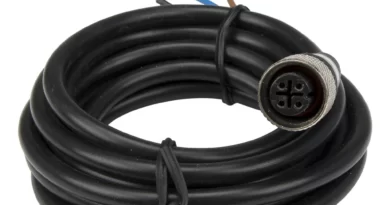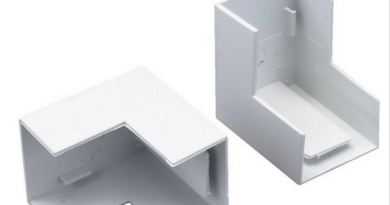Twist and Shout: Innovative Cable Tie Designs for the Modern Age
Cable ties, also known as zip ties or tie wraps, are versatile fastening devices used to bundle, secure and organize cables, wires, and other items. They are made of a flexible plastic material and have a ratcheting mechanism that allows them to be tightened and locked into place. Cable ties come in various lengths, widths, and colors to suit various applications and have different strengths and locking mechanisms to accommodate different sizes and types of items.
Understanding Cable Tie Tensile Strength and its Importance
Tensile strength is a measure of a cable ties resistance to being pulled apart or broken when under tension. It is an important factor to consider when choosing the right cable tie for a specific application, as it determines the maximum load that the tie can safely support. Tensile strength is usually expressed in pounds or Newtons and can vary depending on the type and size of the cable tie.
When selecting a cable tie, it is important to match the tensile strength of the tie to the weight of the items being secured. Using a cable tie with too low tensile strength can result in tie-breaking, potentially causing damage to the items being secured or creating a safety hazard. On the other hand, using a cable tie with too high a tensile strength can result in excessive compression and damage to the items being secured.
The importance of tensile strength in cable ties cannot be overemphasized, as it plays a crucial role in ensuring that items are securely and safely fastened. By carefully selecting cable ties with the appropriate tensile strength, you can ensure that your items are well-secured and that your projects are completed safely and successfully.
Cable Ties in Automotive and Industrial Applications
Cable ties play a vital role in both automotive and industrial applications. In the automotive industry, they are commonly used to secure electrical wiring and hoses, as well as to organize and bundle items in the engine compartment and throughout the vehicle. Cable ties are also used to secure parts during the manufacturing process, such as securing airbags, seat belts, and electrical components.
In industrial applications, cable ties are used for a wide range of purposes, including securing pipes and hoses, organizing electrical wires and cables, and bundling items for storage and transport. They are also used in machinery, construction sites, and in the production of various products. In these environments, cable ties must be able to withstand harsh conditions, such as high temperatures, extreme weather, and exposure to chemicals. To meet these demands, industrial-grade cable ties are often made of materials that are heat-resistant, UV-resistant, and chemically resistant.
In both automotive and industrial applications, cable ties provide a simple and effective solution for securing, organizing, and bundling items, allowing for increased efficiency, safety, and organization in these industries.
Using Cable Ties for Home and Office Organization
Cable ties are not just for industrial and automotive applications, they can also be used for organizing items in the home and office. They can be used to secure and organize cords and cables for electronics, such as computers, televisions, and chargers. Cable ties can also be used to bundle and organize household items, such as garden hoses, tools, and cleaning supplies.
In the office, cable ties can be used to manage cords and cables under desks and in server rooms, improving safety and reducing the risk of tripping hazards. They can also be used to organize paper, pens, and other office supplies, making it easier to find what you need when you need it.
Cable ties are easy to use and come in a range of sizes and colors, making it simple to find the right tie for the job. They are also reusable, which means they can be used again and again, making them a cost-effective solution for organizing items in the home and office. Whether you are organizing your workspace or decluttering your home, cable ties are a practical and versatile solution for keeping things neat and tidy.
Safety and Compliance Standards for Cable Ties
Cable ties play a crucial role in many industries and are widely used in a variety of applications. As a result, there are safety and compliance standards in place to ensure the proper use and performance of cable ties. These standards are designed to ensure the safety of workers, the public, and the environment, and to promote the safe and efficient use of cable ties.
In the US, cable ties are subject to safety standards set by organizations such as Underwriters Laboratories (UL) and the National Electric Code (NEC). In Europe, cable ties are subject to safety standards set by the European Union (EU) and other organizations. These standards cover factors such as tensile strength, temperature rating, and flammability, and are designed to ensure that cable ties are safe for use in various applications.
It is important to use cable ties that meet the relevant safety and compliance standards for your specific application, to ensure the safety of workers and the public and to promote the efficient use of cable ties. By using cable ties that meet these standards, you can be confident that your items are securely and safely fastened, and that your projects are completed safely and successfully.




